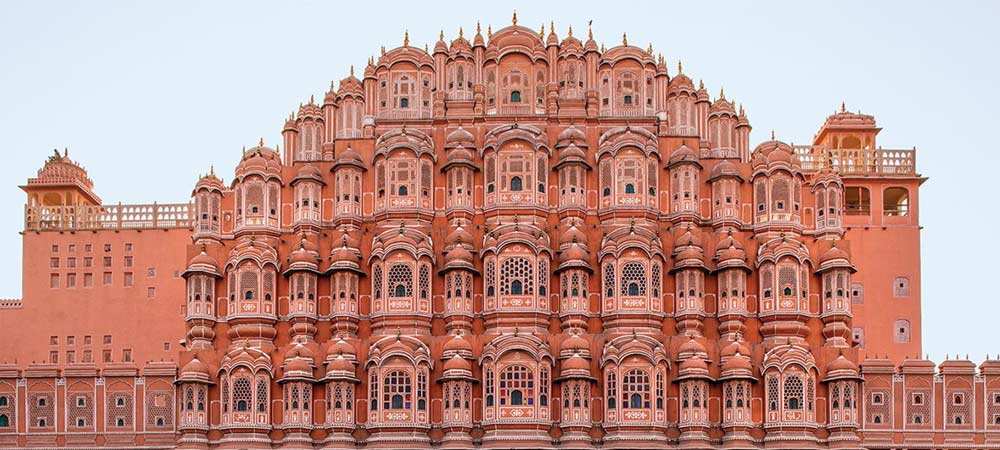
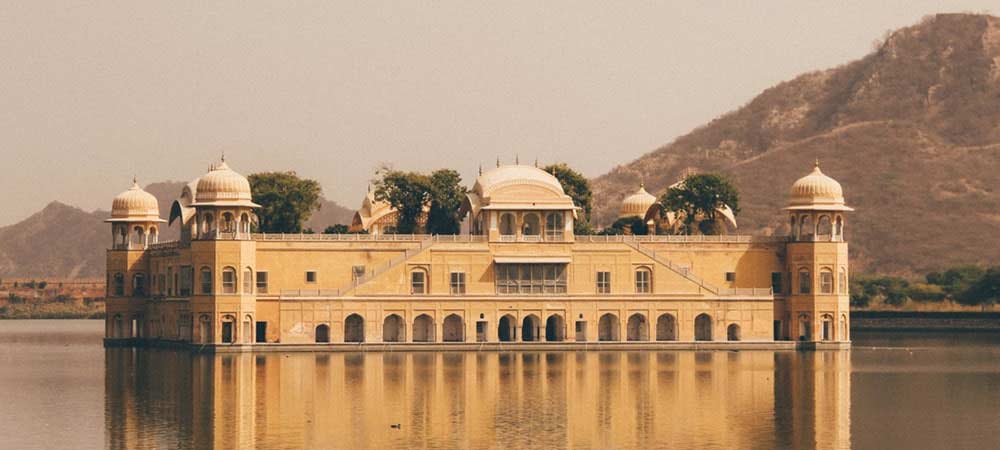
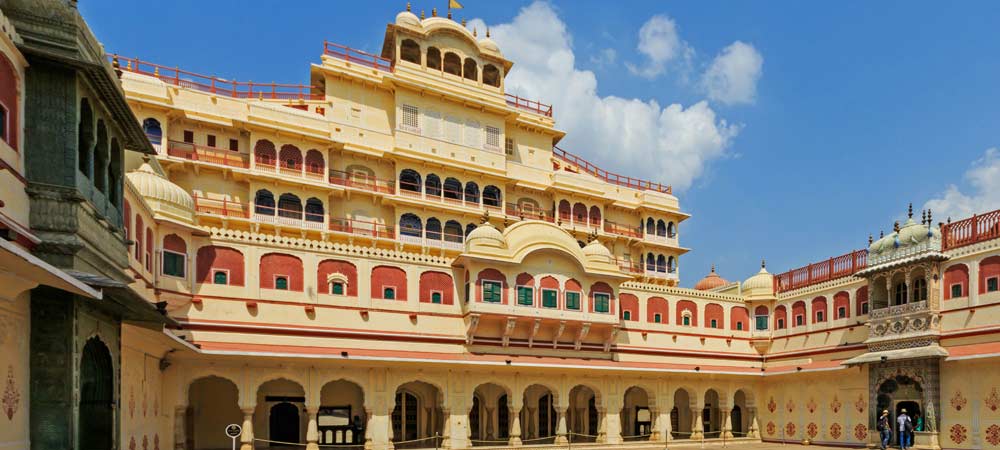
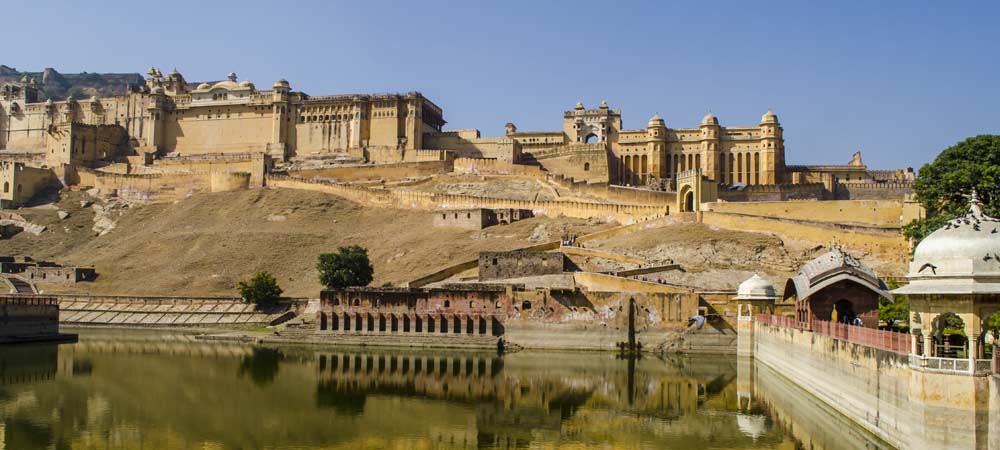
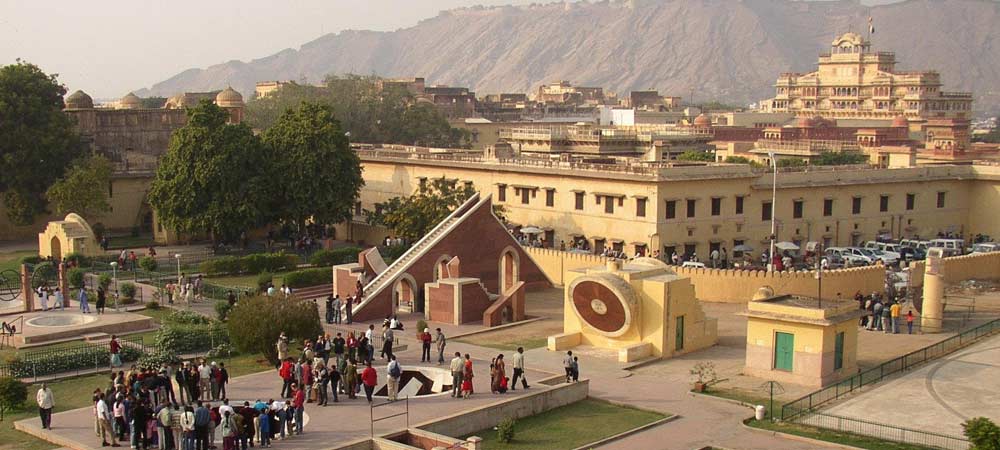

Jaipur Sightseeing Tour Starting @ Just Rs.999/- Only
Jaipur is the capital and the biggest city of the Indian province of Rajasthan in Northern India. It was established on 18 November 1726 by Maharaja Jai Singh II, the leader of Amer after whom the city is named. Jaipur is called the Pink City of India. This city is found 260 km from the Indian capital New Delhi. Jaipur structures a piece of the west Golden Triangle vacationer circuit alongside Agra (240 km). Jaipur is a well-known visitor goal in India and fills in as a passage to other traveler goals in Rajasthan, for example, Jodhpur, Jaisalmer, Udaipur, and Mount Abu.
- Length: 09:00 AM To 05:00 PM (8 hours)
- Spots of intrigue
- Jaipur is a significant vacationer goal in India shaping a piece of the Golden Triangle.
- Guest attractions incorporate the HawaMahal, JalMahal, City Palace, Amer Fort, Jantar Mantar, and the Albert Hall Museum.
Highlights
-
1
'Hawa Mahal' signifies "Royal residence of Winds", a royal residence in Jaipur, Rajasthan. It was worked in 1799 by Maharaja Sawai Pratap Singh. Hawa mahal was structured by Lal Chand Ustad. Hawa mahal is worked of Red and Pink Sandstone. The royal residence is a five-story pyramidal formed landmark which is arranged on the fundamental careful admission in the core of Jaipur's business focus. The royal residence is a five-story pyramidal formed landmark. The front height resembles a honeycomb web of a bee sanctuary that worked with little windows. Every opening was smaller than expected windows and has cut sandstone flame broils, finials and arches.
-
2
Jal Mahal (signifying "Water Palace") is a royal residence situated in the Man Sagar Lake in Jaipur city, the capital of the territory of Rajasthan, India. The royal residence and the lake around it were revamped and expanded in the eighteenth century by Maharaja Jai Singh II of Amber.
-
3
City Palace structures one of the most popular vacation spots and a significant milestone in Jaipur. The excellent royal residence was worked by Maharaja Sawai Jai Singh during his rule. Among the different strongholds and royal residences of Jaipur, City Palace stands separated, with its extraordinary craftsmanship and design.
-
4
Golden Fort worked in the sixteenth century by Maharaja Man Singh, it spreads on the slope. Its development was begun by Raja Man Singh yet finished by his relative Jai Singh. Golden is the exemplary sentimental Rajasthan post royal residence. Golden today is only an impression of the brilliant past of the furious Kachwaha Dynasty that governed over this area from the twelfth to the eighteenth century.
-
5
The Jantar Mantar landmark in Jaipur, Rajasthan is an assortment of nineteen engineering cosmic instruments, worked by the Rajput lord Sawai Jai Singh II, and finished in 1734 CE. It includes the world's biggest stone sundial and is a UNESCO World Heritage site.
Situated close to City Palace and HawaMahal of Jaipur, the landmark highlights brickwork, stone and metal instruments that were constructed utilizing cosmology and instrument structure standards of old Hindu Sanskrit texts. The instruments permit the perception of galactic situations with the unaided eye. The landmark communicates structural advancements, just as the meeting up of thoughts from various strict and social convictions in the eighteenth-century of India.
-
6
The Albert Hall Museum is a historical center in Jaipur in Rajasthan, India. It is the most established exhibition hall of the state and capacities as the State historical center of Rajasthan. The structure is arranged in Ram Niwas Garden outside the city divider inverse New door and is a fine case of Indo-Saracenic engineering. The structure was planned by Sir Samuel Swinton Jacob, helped by Mir TujumoolHoosein, and was opened as an open exhibition hall in 1887. It is additionally called the Government Central Museum.
-
7
Sanjay Sharma Museum Jaipur can be a royal treat to your eyes since this museum houses diverse whimsical old artifacts right from original copies to book stands, notable recreations to painting and relics.
-
8
Jaipur, the pink city of India, has got a new museum, namely Khazana Mahal which showcases rare gems, jewels, and stones, and will be opened for the public in June. Khazana Mahal is constructed in an area of 12,000 square yards with 3-feet security walls, apart from the manual and high-tech security deployed here.
-
9
Jaipur Traditional Market This bazaar is one of Jaipur's most traditional markets for shopping and you will love browsing through the vibrant handicrafts here along with marble carvings and a wealth of other products.
-
10
Panna Meena Kund Stepwells are not new to the state of Rajasthan, as half of its land is on dry desert soil. Many locals suggest Panna Meena ka Kund was built so the people of Amer could collect water, which was later used at many temples nearby. Women also came here to fill their water pots for household work. Apart from this, Panna Meena ka Kund was a resting place for many travelers—business people and saints alike—as the temperature inside the stepwell is significantly cooler.
-
11
Kanak Vrindavan Garden Kanak Vrindavan Garden is a royal garden located on footsteps of Nahargarh hills near Amber Fort. The garden was built around 280 years ago by Maharaja Sawai Jai Singh. Its layout has been given a blend of Mughal and Rajput architecture. Divided into eight sections, the sprawling garden boasts of the intricate fountain of marble, Parikrama and the exquisite mirror work on the walls of Govind Devji temple built in the premises. The gardens here are often compared with those in Vrindavan where Lord Krishna once lived. There is also a sacred spot inside the garden where several rivers meet. The water in this region is considered to be holy and a temple was built near it to praise Lord Vishnu.
Additional Sightseeing Places Of Jaipur
-
1
'Nahargarh Fort Overlooking the gorgeous Pink City of Jaipur lies a magnificent structure – Nahargarh Fort. Built in 1734 by Maharaja Sawai Jai Singh II, the founder of Jaipur, encompassed a larger than life structure that would not only protect the city but also add to its charm and richness. It was originally named ‘Sudarshangarh Fort’ and was later changed to Nahargarh, which means ‘Abode of Tigers’.
-
2
Jaigarh Fort Located on the Hill of Eagles, Jaigarh fort was built in 1726 AD by Sawan Jai Singh II. Jaigarh Fort is located at a height of 500 feet above sea level and offers panoramic views of the surrounding. It houses the world's largest cannon on the wheels called 'Jaivana Cannon'. There are various other attractions within the fort like Laxmi Vilas, Lalit Mandir, Aram Mandir and the Vilas Mandir.
-
3
Sisodia Garden Want a piece of Mughal gardens in the pink city of Jaipur? The Sisodia Rani Ka Bagh is your place to be. 10 kilometres from Jaipur, on the Jaipur- Agra highway, Maharaja Sawai Jai built the palace garden as a gift of love for his second queen. The heritage garden is the largest, most interesting and impressive of all the gardens in Jaipur.
-
4
Located within the historic section of Nahargarh Fort, the Nahargarh biological park jaipur attracts all the nature and wildlife lovers.spread in a large space, this park is grooved of granite rocks, stone rocks and additionally dry deciduous and tropical rain forests. There square measure variety of animal creatures that you just will spot here like lions, tigers, leopards, and plenty of others. Maintained by Rajasthan Government, this park works wonders for people that want to maneuver far from the hustle and bustle of the town.
Night Traditional Program

-
1
'Chokhi Dhani Around 20 kilometres from the main city of Jaipur, there is a mock village called ‘Chokhi Dhani’, which is a perfect mirror to the Rajasthani culture, food, traditions and heritage. The name Chokhi Dhani literally translates to Rajasthani Culture. Specially designed to attract and introduce tourists to the authentic Rajasthani culture and heritage, the village was set up in 1989 over an area spanning 10 acres. Soon after, by 1994, Chokhi Dhani gained its own share of fame among the tourists across the world.
-
2
Light & Sound Show The well- organized evening Amber fort Light and Sound show here is a fascinating attraction of the Amber Fort, with its rocky walls provided with an energetic backdrop for the light- effects. Made exciting by repeating of the various stories and legends of the Rajput Kings attended by harmonious folk music. They tell you the story of Rajputs and explain and the attractive narration takes you through the memory lane of Amer, describing its traditions and the grand lifestyle of the royal family.
